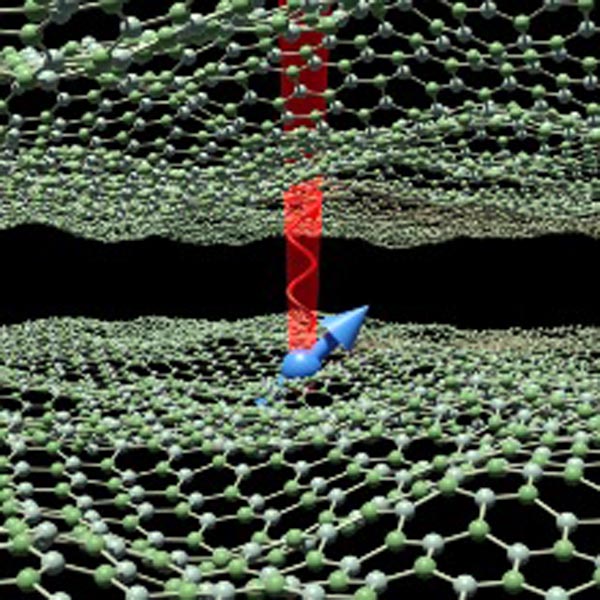New boost in quantum technologies

Picture: University of Stuttgart / 3rd Institute of Physics
In an international collaboration, researchers at the University of Stuttgart were able to detect quantum bits in two-dimensional materials for the first time. Nature Materials covers this in its May 6, 2021 issue.
Quantum computers or quantum sensors consist of materials that are completely different to their classic predecessors. These materials are faced with the challenge of combining contradicting properties that quantum technologies entail, as for example good accessibility of quantum bits with maximum shielding from environmental influences. In this regard, so-called two-dimensional materials, which only consist of a single layer of atoms, are particularly promising.
Researchers at the new Center for Applied Quantum Technologies and the 3rd Institute of Physics at the University of Stuttgart have now succeeded in identifying promising quantum bits in these materials. They were able to show that the quantum bits can be generated, read out and coherently controlled in a very robust manner. “There certainly is still a long way to go before these quantum bits can be used in quantum technology,” says the head of the study and director of the 3rd Institute of Physics at the University of Stuttgart, Prof. Jörg Wrachtrup. “However, the properties found by the scientists are so convincing that they can trigger a new boost in quantum technologies.
Wissenschaftliche Ansprechpartner:
Prof. Jörg Wrachtrup, University of Stuttgart, Physics 3, Phone +49 711 685-65278, E-Mail j.wrachtrup@pi3.uni-stuttgart.de
Originalpublikation:
Single-spin resonance in a van der Waals embedded paramagnetic defect, Nature Materials 6. Mai 2021, https://dx.doi.org/10.1038/s41563-021-00979-4
Media Contact
All latest news from the category: Physics and Astronomy
This area deals with the fundamental laws and building blocks of nature and how they interact, the properties and the behavior of matter, and research into space and time and their structures.
innovations-report provides in-depth reports and articles on subjects such as astrophysics, laser technologies, nuclear, quantum, particle and solid-state physics, nanotechnologies, planetary research and findings (Mars, Venus) and developments related to the Hubble Telescope.
Newest articles

Compact LCOS Microdisplay with Fast CMOS Backplane
…for High-Speed Light Modulation. Researchers from the Fraunhofer Institute for Photonic Microsystems IPMS, in collaboration with HOLOEYE Photonics AG, have developed a compact LCOS microdisplay with high refresh rates that…

New perspectives for material detection
CRC MARIE enters third funding period: A major success for terahertz research: Scientists at the University of Duisburg-Essen and the Ruhr University Bochum have been researching mobile material detection since…

CD Laboratory at TU Graz Researches New Semiconductor Materials
Using energy- and resource-saving methods, a research team at the Institute of Inorganic Chemistry at TU Graz aims to produce high-quality doped silicon layers for the electronics and solar industries….



